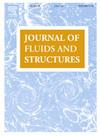Machine learning was used to optimize the geometric arrangement of a pair of unsteady actuators on flow separation over an efficient low Reynolds number airfoil in post-tall conditions. Large eddy simulation was used to validate the results. Two actuators: one with blowing and the other with suction openings were installed on the top surface of an airfoil at low Reynolds number of 60,000. An SD7003 airfoil at a post stall angle of attack of 13° was utilized. The boundary layer flow of the top surface was manipulated by the actuators to control flow separation. The influence of several actuator parameters: frequency, energy input, opening area, location and orientation angle were considered in an optimization of the dual actuator configuration. A genetic algorithm-based optimization was implemented to find the most effective configuration of this coupling. Since the optimization process is time-consuming, machine learning was used to train artificial neural networks to be coupled with genetic algorithm to reduce the computational cost. The artificial neural networks and their training was constantly upgraded during the optimization cycle. Results for the optimal case indicated an increase in lift coefficient and the objective function in comparison to uncontrolled case by factors of 1.88 and 3.33 respectively. We also found a reduction in drag coefficient. It was also found that using a pair of actuators was more efficient than using a single actuator.


